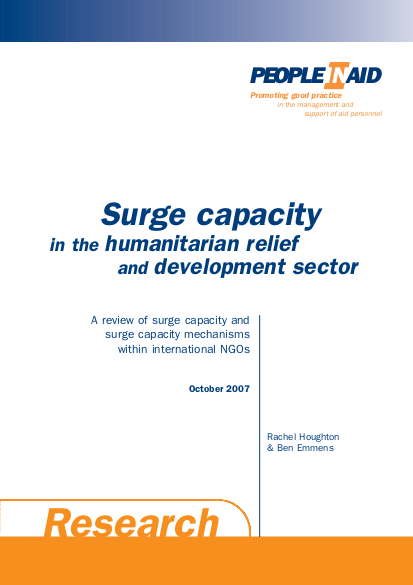
This review of surge capacity has been undertaken within the context of the Emergency Capacity Building project (www.ecbproject.org) and has been undertaken at the request of the Emergency Directors of the IWG agencies. The aim of this report is to stimulate debate and reflection primarily, but not exclusively, on how to resource rapid response.
As the scale and complexity of emergencies grows this will clearly impact on those humanitarian and development agencies mandated to respond. It implies that, if these agencies are to continue to fulfil their mandates they will need to pay greater attention to their capacities to rapidly respond in times of increased need. This includes investing in these capacities between emergencies, a`s well as developing shared capacities between themselves – two critical issues highlighted, for example, in the Tsunami Evaluation Coalition’s (TEC) recent Synthesis Report (Telford et al, 2006). These capacities are commonly referred to as surge capacities.
The purpose of this paper is to foster a deeper understanding of ‘surge capacities’ by: offering definitions and identifying the triggers, or drivers for surge (Chapter 1); exploring how surge capacity is resourced (Chapter 2); enacted (through surge capacity mechanisms (Chapter 3); and effectively enabled (Chapter 4). The paper concludes by drawing together the key findings and offering agencies further ‘food for thought’.